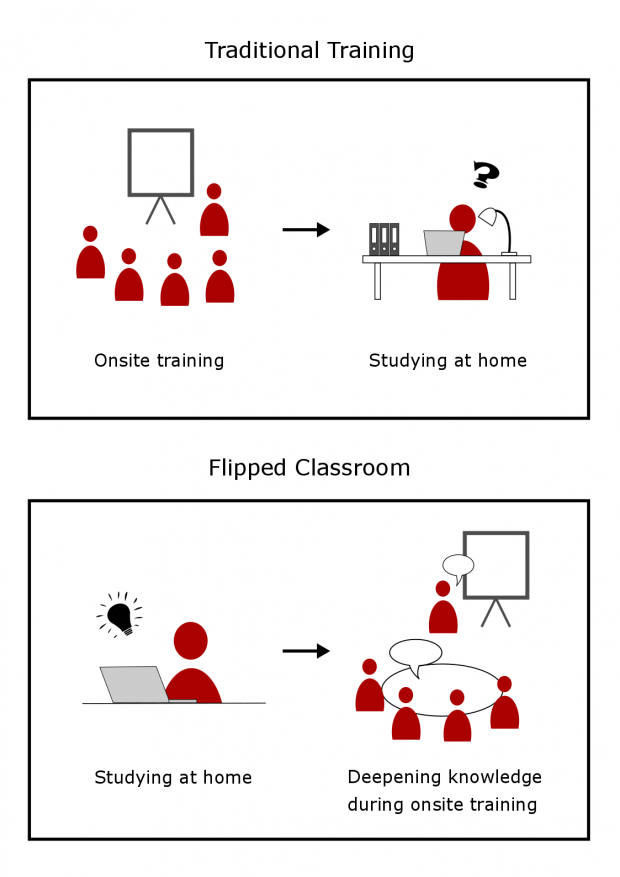Flipped Classroom
Flipped classroom is a form of blended learning that lets you organize your training differently.
The traditional teaching method so far:
- You present the training material during class.
- Afterwards, your students deepen their knowledge at home.
The flipped classroom method turns this teaching model around:
- You prepare the training material and make it available to the students before class.
- Afterwards, your students can study the material on their own.
How you prepare the material for independent studies is up to you. You could, for example, make a video of your presentation and share it with your students through the internet.
Why is flipped-classroom training more efficient?
Paying attention to students with different skill levels requires much time during onsite training. Students with more knowledge can get bored easily. Vice versa, students with less knowledge may get overwhelmed.
The flipped classroom method aligns the different skill levels before the onsite training. The students study the training material at home at their own pace. Depending on their knowledge, they need less or more time for understanding the training content. Students with less knowledge do not slow others down. Advanced students can skip material they already know and use the time for other topics or tasks to deepen their knowledge.
The following onsite training can start at a level that is the same for all students. You can use the time that you gain to to deepen knowledge, answer questions, and do exercises.
Benefits at a glance
- Students study the training material until they have understood it. This way, a training can adapt to the different knowledge levels of a target group.
- The students decide where and how long they study.
- Travel time and costs are reduced because the onsite training sessions become shorter.
- You can reuse or adapt your training material for other classes.
Are there risks?
With the flipped-classroom method, students work on the training material by themselves. If they don’t do it, you cannot use the onsite training sessions efficiently. Preparing the training material for remote learning takes more time than preparing slides for an onsite training. If any questions arise, students cannot ask them directly, but need to wait for the onsite class.
parson offers various training programs, such as Technical Writing for Engineers. Learn more here.

Add new comment